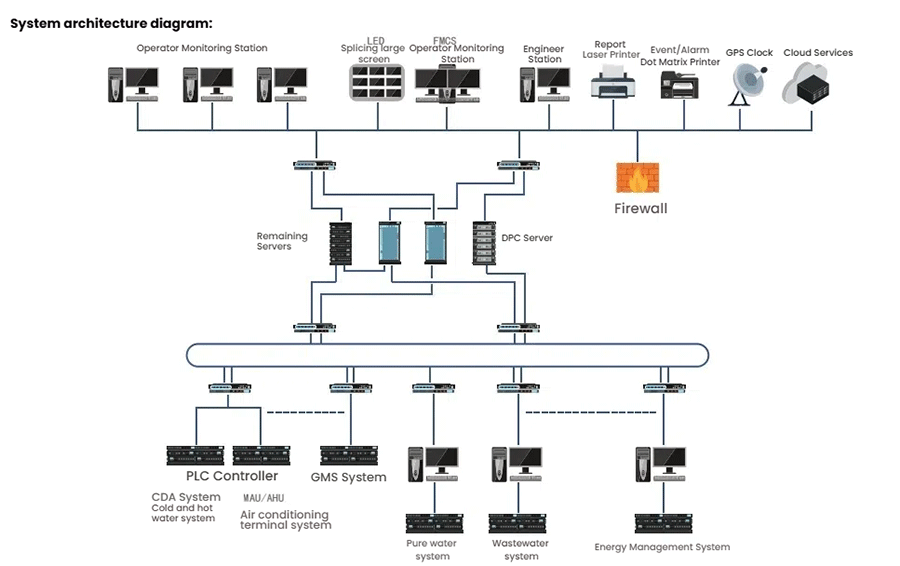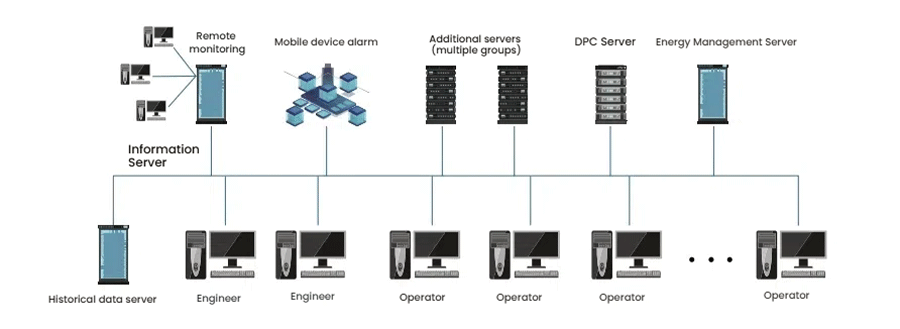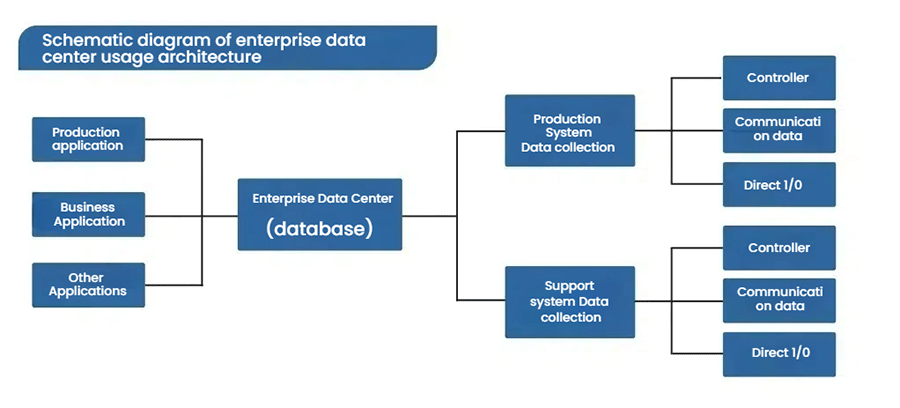FMCS is the abbreviation of Factory Monitoring System. It is a monitoring system mainly for public equipment used in clean workshops. Its purpose is to monitor the chilled water system, hot water system, MAU/AHU air conditioning terminal system, CDA system, GMS special gas system, RO pure water system, wastewater system, waste gas system, energy management system, leakage detection system and other systems in the factory area in a unified manner in the central control room, and record them for immediate problem handling and future problem analysis, so as to improve system management efficiency and reduce operation and maintenance costs, thereby improving the management level of equipment. The composition architecture of FMCS server and terminalThe FMCS system has redundant servers to ensure that the collected data is real-time and not lost. Both historical records and alarm information have dedicated servers to save data, and a complete architecture is used to ensure that the data in each link can be processed reliably, thereby ensuring that the system can operate stably and reliably.
The composition architecture of FMCS server and terminalThe FMCS system has redundant servers to ensure that the collected data is real-time and not lost. Both historical records and alarm information have dedicated servers to save data, and a complete architecture is used to ensure that the data in each link can be processed reliably, thereby ensuring that the system can operate stably and reliably.
FMCS technical features
1. Improve the overall safety level of the enterprise workshop: It can reflect the operation and fault status of each system equipment, temperature and humidity, pressure and liquid level and other related information in real time
Eliminate faults in hidden dangers, so as to ensure the normal operation of production.
2. Improve the stability of each system: It has redundant servers and ring network structure to ensure that the collected data is not lost in real time, so as to ensure the stable and reliable operation of each system.
3. Safety operation standard management: Different authority levels are assigned according to different positions to facilitate maintenance and management.
4. Save energy consumption and labor costs for enterprises: By completing the optimization and adjustment of each system in the central control room, efficient control, achieving the goal of energy saving and reducing the number of enterprise managers.
5. Extend the service life of equipment: The equipment is centrally managed, and managers can be reminded to maintain the equipment in time.


